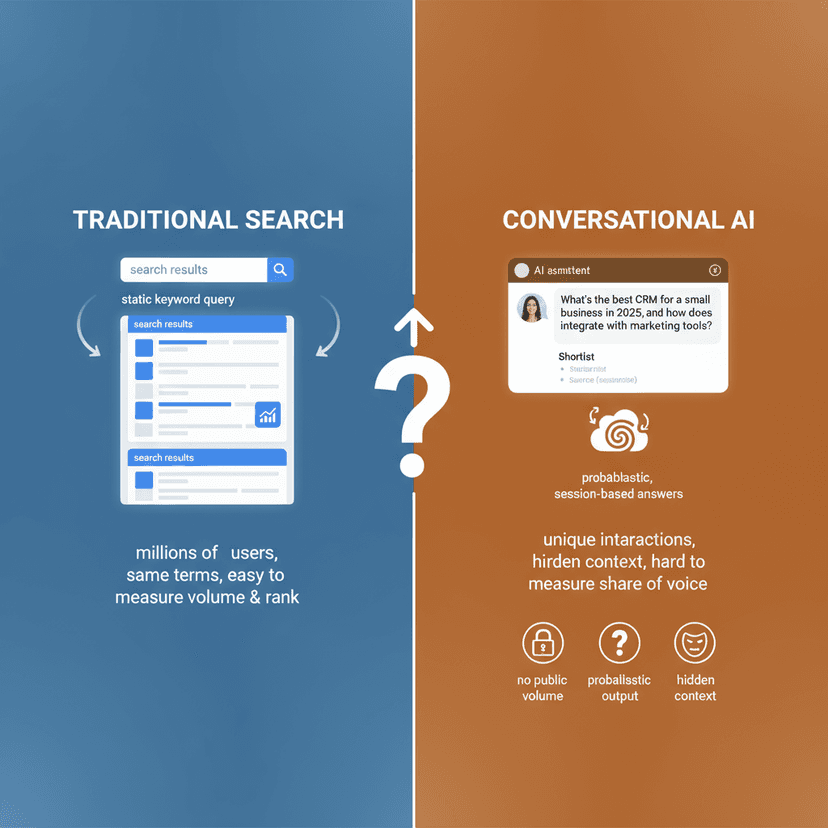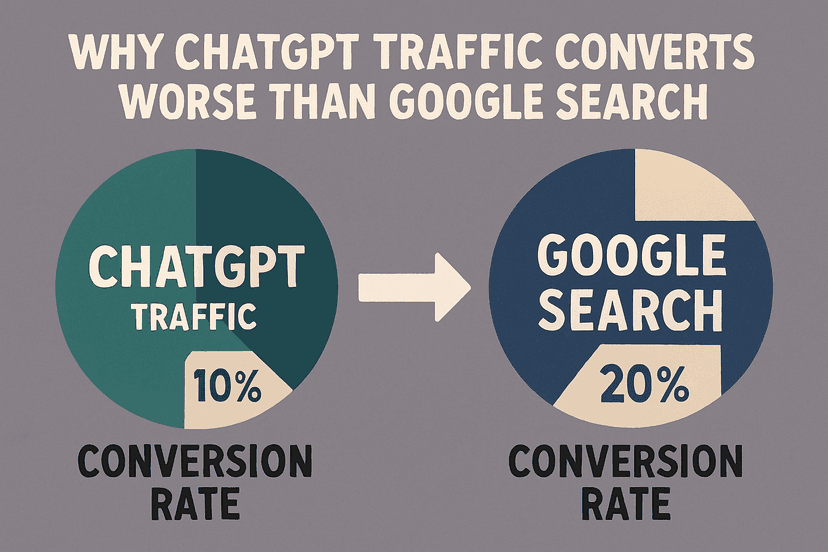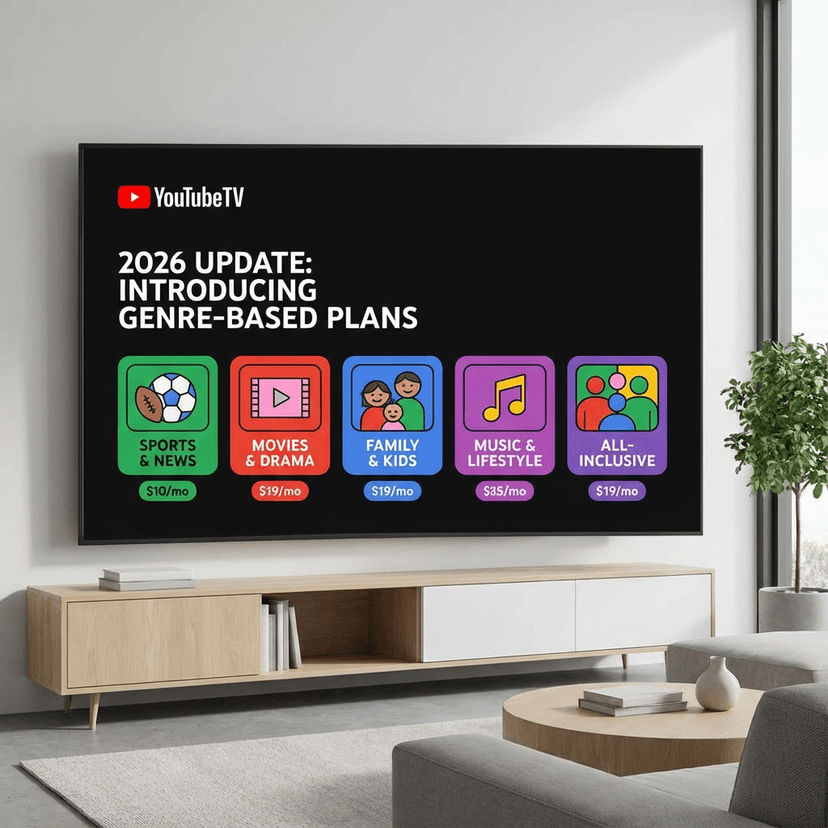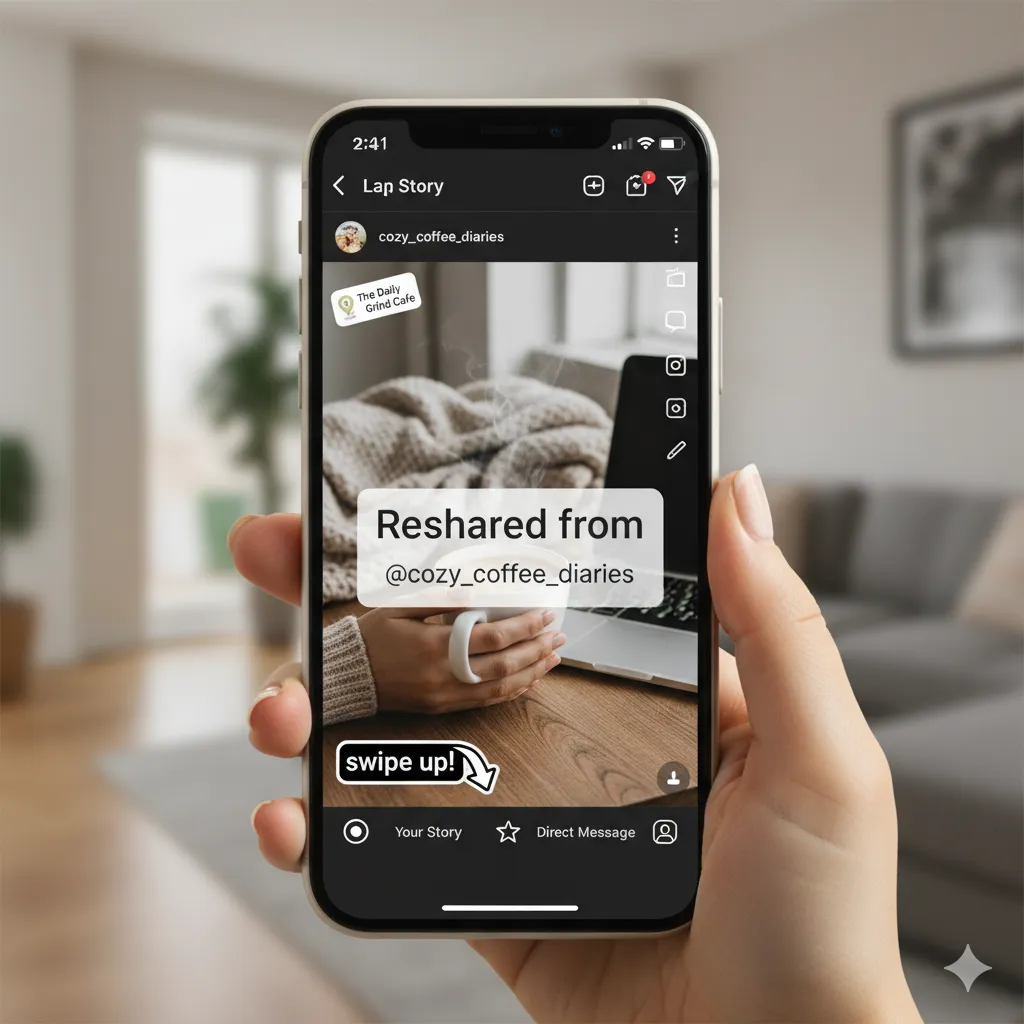Introduction
Picture this scenario: you notice a steady stream of visitors arriving at your website from ChatGPT, which sounds exciting until you realize that a significant portion of them are landing on pages that don’t actually exist. These visitors clicked on what appeared to be legitimate links, only to encounter the dreaded 404 error page. This isn’t just a minor inconvenience. It represents lost opportunities, damaged credibility, and potentially negative impacts on your search engine optimization efforts.
Recent data reveals a concerning trend. Analysis of over 18,000 landing pages receiving traffic from ChatGPT showed that approximately 3.35% of these referrals ended up on non-existent pages. In some extreme cases, this number has climbed as high as 57% for certain websites. Each wrong URL represents a potential customer who arrived at your digital doorstep with genuine interest, only to find nobody home.
The challenge stems from how artificial intelligence models like ChatGPT function. Unlike traditional search engines that crawl and verify live web pages, ChatGPT generates responses based on patterns learned during training. Sometimes, this process creates what experts call “hallucinated” links that look perfectly legitimate but lead nowhere. These phantom URLs waste valuable clicks, erode user trust, and can negatively impact your website’s overall performance.
This comprehensive guide walks you through identifying, analyzing, and fixing wrong URL issues stemming from ChatGPT referrals. Whether you manage a small blog, are focused on Digital Marketing For Startups, or oversee a large enterprise website, understanding how to handle these phantom links will help you capture more value from AI-driven traffic while maintaining a positive user experience.
Understanding Why ChatGPT Creates Wrong URLs
To effectively address wrong URL problems, you need to understand their root cause. ChatGPT operates fundamentally differently from traditional web crawlers and search engines. When someone asks ChatGPT for website recommendations or specific resources, the model doesn’t perform a real-time search of the internet. Instead, it draws from patterns and information absorbed during its training phase, combined with some ability to access current information.
The model predicts what URLs might exist based on common website structures, naming conventions, and patterns it has observed. Sometimes these predictions hit the mark perfectly. Other times, the model generates URLs that seem plausible but don’t correspond to actual pages on your website. This phenomenon occurs because ChatGPT prioritizes providing helpful, structured responses over absolute accuracy in every detail.
Several factors contribute to wrong URL generation. The model might combine elements from different real pages to create a new URL that seems logical. For instance, if your site has a blog section and articles about various topics, ChatGPT might suggest a URL like “/blog/chatgpt-integrations” even if you’ve never published that specific article. The structure follows your site’s pattern, but the exact page doesn’t exist.
Training data cutoffs also play a role. If ChatGPT learned about your website structure from data collected at a specific point in time, it won’t automatically know about pages you’ve deleted, renamed, or restructured since then. This creates a disconnect between what the model suggests and your current site architecture.
Additionally, the model sometimes extrapolates URLs based on what it thinks should exist rather than what actually does exist. If your website covers a particular topic comprehensively, ChatGPT might assume you have content on related subtopics and generate URLs accordingly. This assumption-based generation leads to phantom links that look legitimate but lead to dead ends.
Understanding these mechanisms helps you approach the problem strategically rather than treating each wrong URL as a random error. The patterns in how ChatGPT generates these links can inform your content strategy and help you anticipate which phantom URLs might appear.
The Business Impact of Phantom URLs
Wrong URLs from ChatGPT referrals create several interconnected problems that extend beyond simple user frustration. Each phantom link represents a failure point in your customer journey, and these failures accumulate to create measurable business impacts.
Lost traffic stands as the most immediate consequence. When someone clicks a ChatGPT-suggested link and lands on a 404 page, they face a choice: invest effort in finding the right page or simply leave. Research consistently shows that most users choose to leave. These aren’t random visitors either. They arrived with specific intent, having asked ChatGPT for help with a particular question or problem. Losing these motivated visitors hurts more than losing casual browsers.
Trust erosion presents a subtler but equally serious problem. Users who encounter broken links often don’t distinguish between AI hallucination and website mismanagement. They see a suggested link, click it, find nothing, and form negative impressions about your brand’s reliability. This perception can persist even if they eventually find the correct page, coloring their entire interaction with your site.
Search engine optimization risks emerge when wrong URLs proliferate across your analytics. Search engines like Google evaluate websites based partly on user experience signals. High bounce rates from 404 pages send negative signals about content quality and site maintenance. While search engines understand that some 404 errors are inevitable and even healthy, excessive errors or poorly handled redirects can impact how crawlers allocate resources to your site.
The concept of crawl budget becomes relevant here. Search engines allocate a certain amount of crawling resources to each website based on factors like site authority, update frequency, and overall quality. When crawlers repeatedly encounter phantom URLs or poorly implemented redirects, they waste crawl budget on dead ends rather than indexing your valuable content. For large websites with thousands of pages, this inefficiency can prevent important pages from being crawled and indexed promptly.
Missed conversion opportunities represent the bottom-line impact. Every visitor from ChatGPT arrived because they were actively seeking information, solutions, or products related to your offerings. These represent warm leads with demonstrated interest, the primary goal of any Lead Generation Service. When wrong URLs prevent these visitors from engaging with your content, you lose potential customers, subscribers, and brand advocates. The cumulative effect of losing even a small percentage of AI referrals can translate to significant revenue impacts over time.
Beyond these direct effects, phantom URLs create operational overhead. Your team must spend time identifying problematic URLs, deciding how to handle them, implementing fixes, and monitoring results. This diverts resources from other valuable activities. The problem compounds as AI-driven traffic grows, potentially requiring dedicated processes and tools to manage effectively.
Are AI Referrals Worth Your Time
Given the challenges associated with wrong URLs, you might wonder whether optimizing for AI referrals justifies the effort. The answer depends on your specific situation, but for most websites, the investment pays dividends.
Consider the growth trajectory of AI-assisted search. ChatGPT and similar tools are fundamentally changing how people discover information online. Traditional search engines still dominate, but AI assistants are capturing an increasing share of information-seeking behavior, particularly among tech-savvy users and professionals. Early adoption of AI referral optimization positions you advantageously as this trend accelerates.
The quality of AI referral traffic often exceeds that of generic search traffic. When someone asks ChatGPT for specific recommendations or resources, they’ve already moved beyond the initial awareness stage. They’re seeking solutions, not just browsing. This intent translates to higher engagement rates and better conversion potential when you successfully capture these visitors.
Data from early adopters illustrates the opportunity. Websites that have implemented systematic approaches to managing AI referrals report not only reduced bounce rates from phantom URLs but also improved overall engagement from AI-driven traffic. The visitors who successfully land on relevant content tend to spend more time on site and explore more pages than average visitors.
The competitive landscape also matters. While some businesses actively optimize for AI referrals, many remain unaware of the issue or haven’t prioritized addressing it. By taking action now, you gain advantages over competitors who are losing potential customers to preventable 404 errors. This advantage grows as AI-driven traffic increases.
Cost-benefit analysis favors optimization for most sites. The tools and techniques required to identify and fix wrong URLs largely leverage platforms you probably already use, like Google Analytics and SEO Audit tools. The incremental effort to set up proper monitoring and response processes is relatively modest compared to the potential returns from capturing previously lost traffic.
However, context matters. A small personal blog with minimal traffic might not justify elaborate optimization processes. The time investment might exceed the benefit. Conversely, e-commerce sites, SaaS platforms, and content publishers with substantial traffic volumes should absolutely prioritize AI referral optimization. The scale of potential impact justifies dedicated attention and resources.
Finding Wrong URLs in Google Analytics 4
Identifying which ChatGPT referrals are hitting wrong URLs requires systematic analysis of your website analytics. Google Analytics 4 provides the necessary data, but you need to know where to look and how to interpret what you find.
Start by navigating to the Reports section in your GA4 property. From there, follow the path to Life cycle, then Engagement, and finally Pages and screens. This report displays comprehensive data about which pages users visit on your website, including traffic sources and user behavior metrics.
The default view shows all pages across all traffic sources, which isn’t immediately helpful for identifying ChatGPT-specific issues. You need to filter and dimension the data appropriately. Begin by changing the primary dimension to “Page title and screen class.” This grouping organizes pages by their titles rather than URLs, making it easier to spot your 404 page among regular content.
Next, add a secondary dimension to see traffic sources. Click the plus icon near the dimensions area and select “Session source / medium” from the Traffic source category under Cross-channel. This addition shows you where traffic to each page originated, allowing you to isolate ChatGPT referrals.
Now comes the critical filtering step. Use the search functionality above the data table to enter “chatgpt.com / referral” as your filter criterion. GA4 will now display only the pages that received traffic from ChatGPT. This filtered view reveals the complete picture of your AI referral landscape.
Look for your 404 page in the results. Most websites title their error pages something like “Page Not Found,” “404 Error,” or similar variations. When you see this title appearing alongside chatgpt.com as the referral source, you’ve confirmed that ChatGPT is sending traffic to non-existent pages on your site.
The metrics associated with these 404 page visits tell an important story. Pay attention to the number of views, which indicates how many times ChatGPT users landed on error pages. Also examine engagement metrics like average engagement time and bounce rate. Typically, 404 pages show very low engagement time and high bounce rates, confirming that users are leaving quickly after encountering the error.
Beyond just identifying that wrong URLs exist, this analysis helps you understand the scale of the problem. If you’re seeing hundreds or thousands of 404 views from ChatGPT referrals, the issue demands immediate attention. Even smaller numbers warrant action, as each represents a lost opportunity.
The data also reveals patterns. You might notice that wrong URLs cluster around certain topics or follow particular naming conventions. These patterns provide insights into how ChatGPT is hallucinating your URLs and can inform your response strategy.
Setting Up Your ChatGPT Referral Report
Rather than manually filtering your GA4 data every time you want to check ChatGPT referrals, create a dedicated report that saves time and ensures consistency in your monitoring efforts.
Start from the same Pages and screens report you used for initial analysis. This time, you’ll configure it as a custom report with permanent filters and save it for ongoing use. Click the pencil icon typically located in the upper right corner of the report interface. This opens the report editor where you can customize dimensions, metrics, and filters.
In the report editor, locate the filters section. Add a new filter specifically for Session source / medium. Configure this filter to use “Exactly matches” as the match type, then enter “chatgpt.com / referral” as the value. This filter ensures the report always shows only ChatGPT traffic, eliminating the need for manual filtering each time you access it.
Consider adding additional useful dimensions and metrics while you’re customizing the report. For example, you might include metrics like engagement rate, average engagement time, and conversions alongside the default page views. These additional data points help you evaluate not just whether wrong URLs exist but also how they compare to successful page visits.
Once you’ve configured the report to your satisfaction, save it with a clear, descriptive name. Something like “ChatGPT Referrals” or “ChatGPT Landing Pages” works well. Choose “Save as a new report” rather than overwriting an existing report. This creates a dedicated report that appears in your GA4 navigation.
For optimal organization, place this new report in a logical location within your GA4 structure. Navigate to the Library section at the bottom of the Reports panel. Find the Life cycle collection and drag your newly created ChatGPT report into the Engagement folder. This placement makes intuitive sense since you’re analyzing engagement from a specific traffic source.
After saving and organizing your report, test it by navigating away and then returning to it through the normal GA4 interface. Verify that all your filters and customizations persist correctly. The report should immediately display ChatGPT referral data without requiring any manual filtering or configuration.
Establish a regular review schedule for this report. Depending on your traffic volume, weekly or monthly reviews might be appropriate. During each review, note any new phantom URLs that appear, track trends in overall ChatGPT referral volume, and monitor the effectiveness of any fixes you’ve implemented.
Document your findings in a spreadsheet or project management tool. Create columns for the phantom URL, the number of visits it received, the date you first identified it, the action you took (redirect, create content, optimize 404, etc.), and the date you implemented the fix. This documentation helps you track patterns, measure the effectiveness of different approaches, and justify the resources invested in AI referral optimization.
Deciding Between Redirects and 404 Pages
Not all wrong URLs deserve the same response. The appropriate fix depends on multiple factors including the URL’s relevance, traffic volume, backlink profile, and alignment with your content strategy. Understanding when to redirect, when to create content, and when to simply maintain a clean 404 requires careful analysis.
Redirects make sense when the phantom URL closely matches existing content on your site. For example, if ChatGPT generates a link to “/blog/chatgpt-integrations” and you have a published article about ChatGPT SEO tools, redirecting the phantom URL to your actual article serves users well. They arrived seeking information about ChatGPT integrations, and your SEO tools article likely addresses their underlying need. This type of redirect preserves user intent while guiding visitors to relevant content.
The presence of backlinks also argues strongly for implementing redirects. Even if a page never existed on your site, if other websites have linked to the phantom URL, those links carry SEO value. Allowing them to point to a 404 page wastes this link equity. Instead, redirect the URL to the most relevant existing page on your site. This preserves the authority those backlinks represent and ensures they contribute positively to your SEO rather than creating dead ends.
Creating new content becomes the right choice when a phantom URL indicates genuine demand for information you haven’t yet provided. If your analytics show consistent traffic to a non-existent page about a specific topic, that traffic represents validated interest. Rather than redirecting these visitors elsewhere, consider building the content they’re seeking. This approach transforms a problem into an opportunity, filling content gaps revealed by AI referral patterns.
However, indiscriminate redirecting creates its own problems. Google and other search engines recognize what they call “soft 404s” – pages that return a 200 status code but contain little or no valuable content. Redirecting multiple phantom URLs to generic pages like your homepage often triggers soft 404 classification. Search engines may interpret this as an attempt to hide errors rather than genuinely serving users.
Soft 404s carry SEO consequences. They confuse crawlers about your site structure and content quality. Instead of efficiently crawling and indexing your valuable pages, bots waste resources on redirects that don’t lead to relevant content. For large sites with many pages, this crawl inefficiency can prevent important content from being indexed promptly or thoroughly.
Clean 404 pages represent the best choice for truly irrelevant phantom URLs. If ChatGPT generates a link to “/features/data-dashboard” and you’ve never offered such a feature, have no plans to build it, and it doesn’t align with your business model, maintaining a proper 404 response is honest and appropriate. Search engines expect and accept legitimate 404 responses. A well-designed 404 page can still provide value by helping users find relevant content even when the specific URL doesn’t exist.
The decision framework should consider all these factors systematically. For each phantom URL you identify, ask yourself these questions: Does closely related content already exist on my site? If yes, redirect. Does the phantom URL have backlinks pointing to it? If yes, redirect to preserve link equity. Does the phantom URL represent content I should create based on demonstrated demand? If yes, build the content. Is the phantom URL completely irrelevant to my site’s purpose and offerings? If yes, maintain a quality 404 page.
Document your decisions and their rationale. This documentation helps maintain consistency as you handle new phantom URLs over time and provides valuable context if you need to revisit decisions later.
Using Semrush to Prioritize URL Fixes
While Google Analytics reveals which ChatGPT referrals are hitting wrong URLs, SEO tools like Semrush provide deeper technical insights that inform your prioritization and fix strategy. Combining data from both sources creates a comprehensive picture of the problem and its optimal solutions.
Begin by exporting the ChatGPT referral data you’ve gathered in GA4. Most analytics platforms allow you to export reports as CSV files. This export should include all the phantom URLs you’ve identified along with their traffic metrics. Having this data in a portable format allows you to analyze it using various tools.
Semrush’s Site Audit feature becomes particularly valuable here. If you don’t already run regular site audits, set one up specifically to analyze your phantom URL situation. Configure the audit to crawl your entire site or at minimum the sections where phantom URLs appear most frequently.
Once the audit completes, navigate to the Issues tab within the audit results. Look for the section labeled “X pages returned 4XX status code” under Errors. This section lists all pages on your site that return error codes, including 404 Not Found responses. The number X indicates how many such pages exist.
Click through to see the detailed list of 4XX errors. This list shows you the technical reality behind the traffic patterns you observed in GA4. For each phantom URL, Semrush provides information that GA4 doesn’t capture, such as whether the page has backlinks, how many referring domains link to it, and whether the URL appears in your sitemap or other site structures.
The backlink data proves especially valuable. When Semrush shows that a phantom URL has backlinks, you know that other websites are linking to a page that doesn’t exist. This situation demands action because those backlinks represent SEO value that’s currently wasted. Redirecting the phantom URL to relevant existing content preserves this link equity and turns a negative into a positive.
Semrush also helps you identify soft 404 situations. Sometimes what appears as a 404 in analytics might actually return a different status code or display a thin content page rather than a proper error page. Semrush’s crawler detects these nuances, helping you understand the true technical state of each problematic URL.
The tool can reveal patterns in your wrong URLs that inform broader fixes. For example, you might discover that multiple phantom URLs share a common structure or stem from a site reorganization that left broken internal links. Identifying these patterns allows you to implement systematic solutions rather than addressing each URL individually.
Use Semrush’s priority indicators to guide your action sequence. The tool typically assigns priority levels to different issues based on their potential SEO impact. High-priority issues deserve immediate attention, while lower-priority items can wait for routine maintenance cycles.
Combine the traffic data from GA4 with the technical insights from Semrush to create a prioritized action list. For instance, a phantom URL with high traffic volume from ChatGPT and multiple backlinks pointing to it should jump to the top of your fix list. Conversely, a phantom URL with minimal traffic and no backlinks can wait or might not require action beyond ensuring your 404 page functions well.
Create a spreadsheet that merges data from both sources. Include columns for the URL, GA4 traffic metrics, Semrush technical status, backlink count, priority level, and planned action. This consolidated view helps you make informed decisions and track your progress as you implement fixes.
Converting Phantom Links into Content Strategy
Phantom URLs represent more than just errors to fix. They reveal gaps in your Content Marketing strategy and opportunities to create valuable new resources that attract engaged visitors. The key lies in interpreting the patterns and volume of traffic to non-existent pages.
When ChatGPT consistently directs users to a particular phantom URL, it’s signaling that people are asking questions or seeking information that the AI believes your site should address. This represents validated demand for content. Unlike keyword research that shows what people search for, phantom URL traffic shows what an AI assistant thinks is worth recommending, which often reflects deeper user intent.
Start by reviewing your ChatGPT referral report to identify phantom URLs with significant traffic. The threshold for “significant” depends on your overall traffic volume, but look for URLs receiving dozens or hundreds of visits. These represent the strongest content opportunities because they demonstrate consistent interest rather than one-off queries.
Analyze the phantom URL structure to understand what content users expect to find. A URL like “/blog/chatgpt-integrations” clearly indicates users want information about integrating ChatGPT with other tools or platforms. The URL itself serves as a content brief, telling you the topic, format, and likely user intent.
Research the topic before committing to create content. Just because ChatGPT sends traffic to a phantom URL doesn’t automatically mean you should build that page. Verify that the topic aligns with your expertise, business goals, and target audience. Use keyword research tools to understand search volume and competition for related terms. This research ensures you’re investing resources in content that will deliver returns beyond just capturing phantom URL traffic.
When you decide to create content for a phantom URL, build something comprehensive and valuable. Users who clicked the ChatGPT-suggested link arrived with specific expectations. Meeting or exceeding those expectations requires quality content that thoroughly addresses the topic. Thin or rushed content will disappoint visitors and might lead







